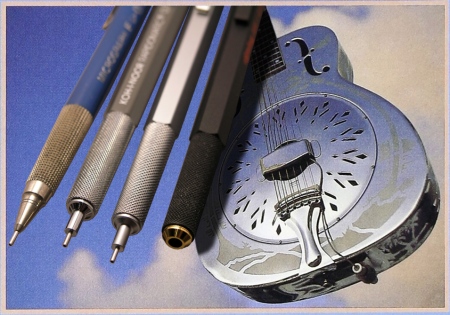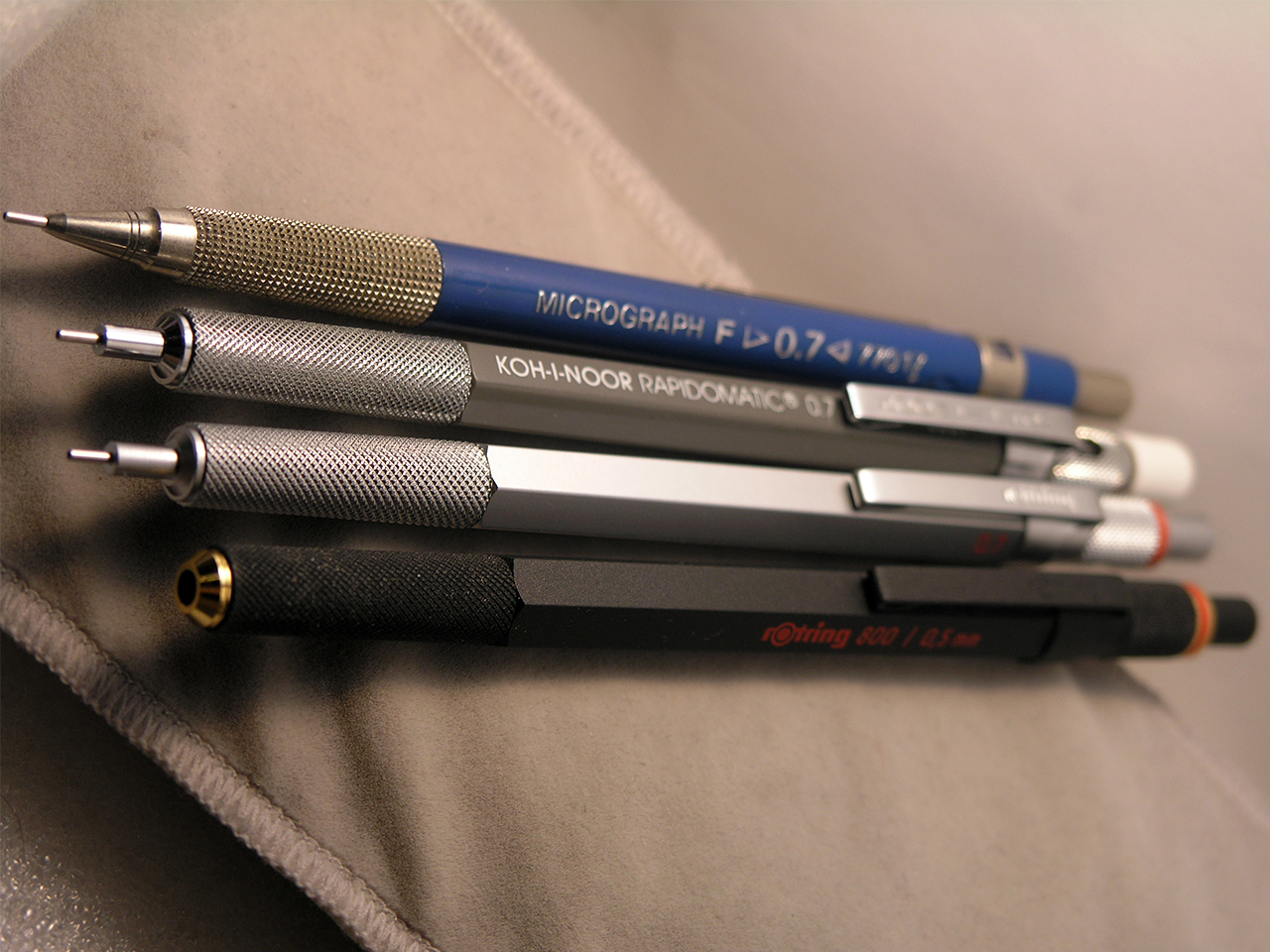Pentel has been making writing instruments since the 1940’s. But 1968 was the big “break out” year for Pentel. This was when they released the Mechanica. 2018 was the celebration of their 50th anniversary. Alas, no re-issue was made. But it did indeed cause a spike in resale prices of the original mechanical pencil. So well made that examples are still in use today.
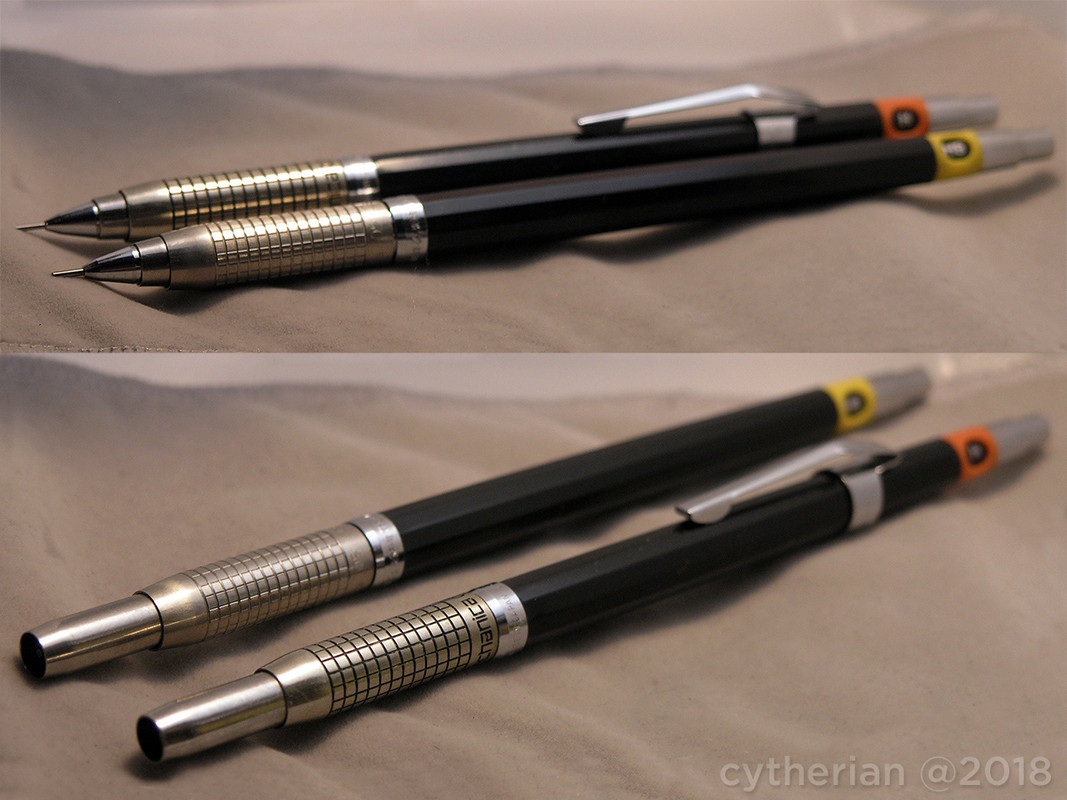
What made the Mechanica so unusual is the tip protection mechanism–a sliding cylindrical metal sheath that extends down over the tip to protect it, then is retracted when preparing the pencil for use.
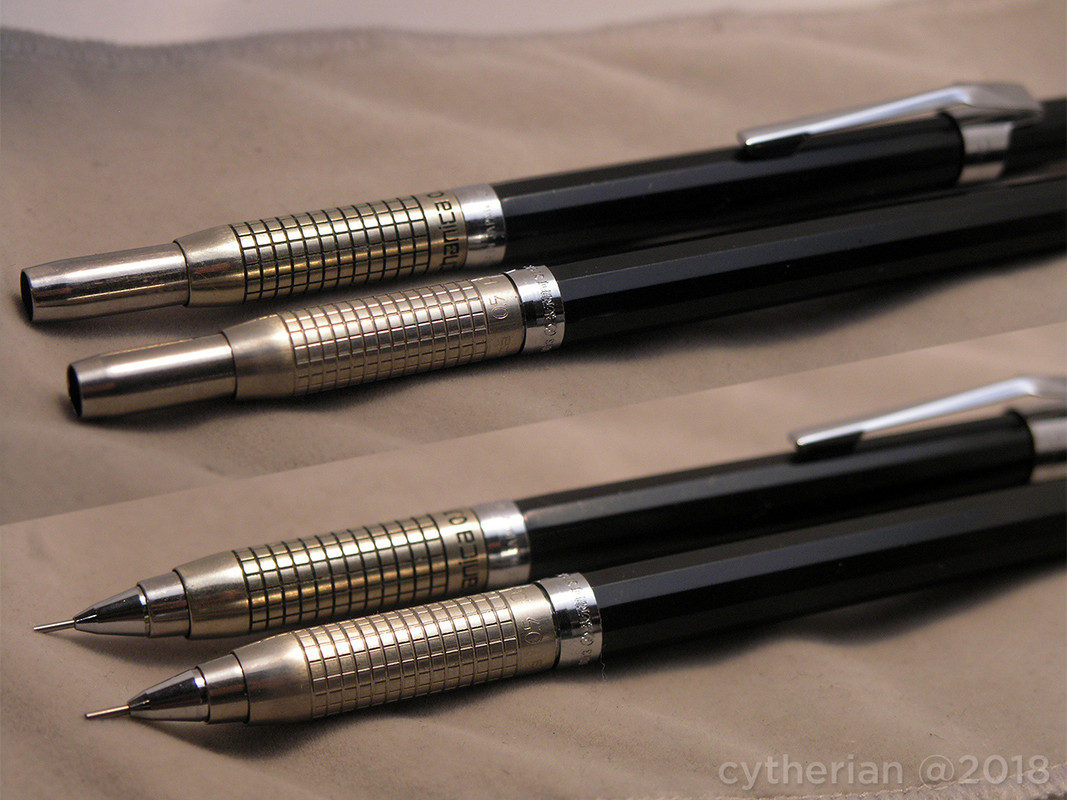

- Weight: Perhaps a little on the light side, but pleasantly so. You won’t tire from writing with it, while not feel like it’s inexpensive (as you would from a PG2 or PG5).
- Balance: Center of gravity is slightly forward. The metal in the front feels solid and provides ample grip.
- Feature: The sliding protective metal tip sleeve is most unusual and the most compelling feature. It works well and does the job.
- Convenience: It’s a somewhat long pencil at 15cm, but doesn’t feel uncomfortably long. The provided vinyl sleeve is just a tad short, and could be more robust (a little thin), but looks nice. There is a removable clip that is a standard Pentel accessory (so if you lose it, you can take one from a P205).
- Mechanism: Feels luxuriously smooth. Tactile click without any tinny or hollow sound. The end button is metal (unlike black plastic with the lesser PMG twin).
- Design: This is simply a stunningly handsome pencil. I think the 0.3mm looks more distinctive, as the grid lines etched into the metal grip have black paint applied, whereas the 0.5mm is more “raw.” You can see the difference if you look closely in the photos.
Pentel provided the Mechanica in a nice hard plastic hinged box, with some accessories.
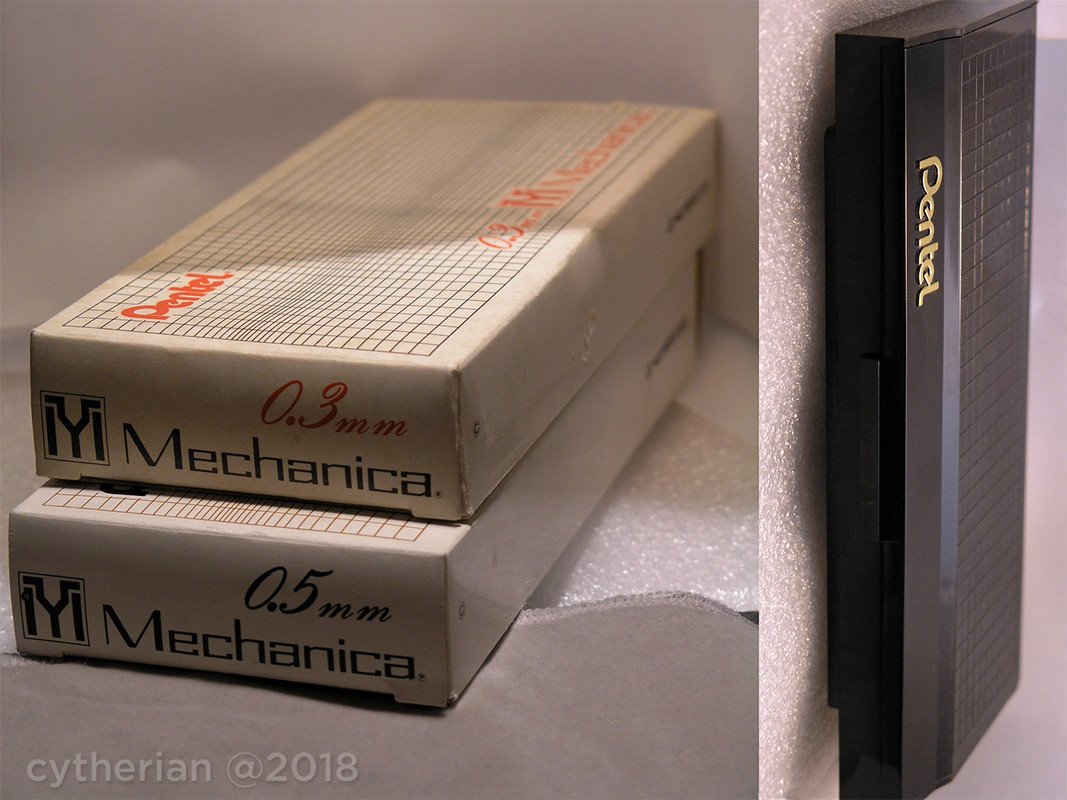

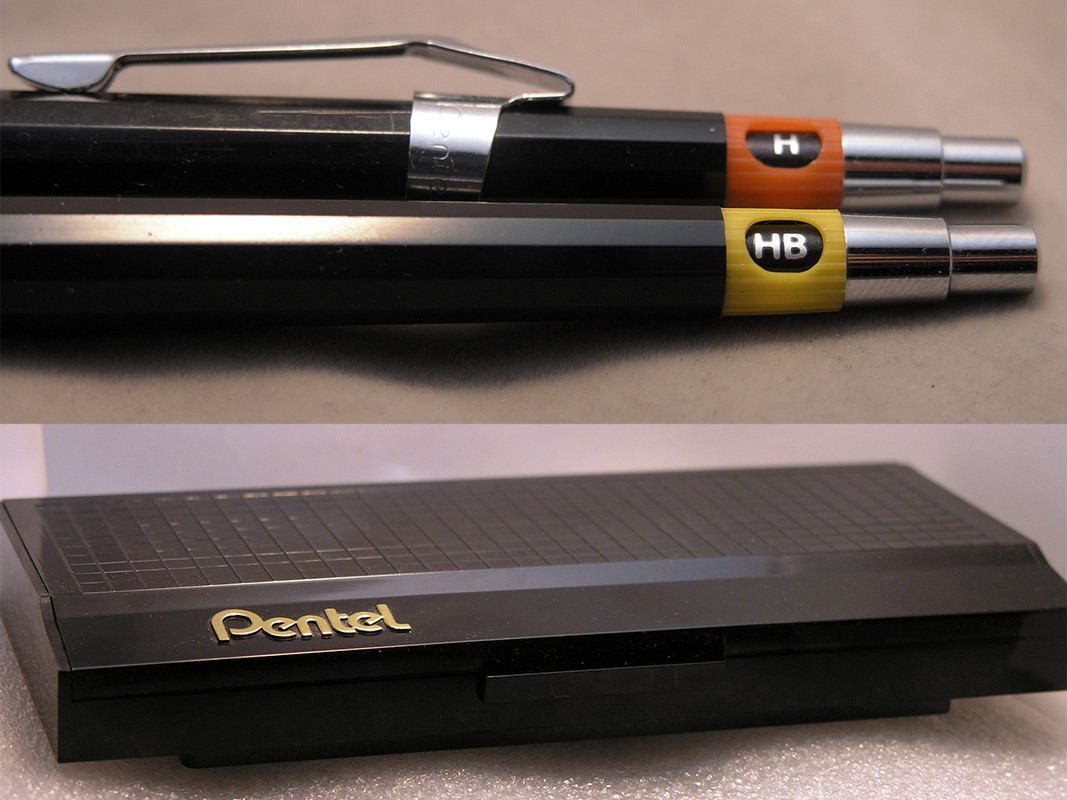
The clip is designed to be easily removable, so that when using the pencil there’s no feeling of the clip. The lead type indicator is easily changed by loosening the collar around it, turning to the loaded lead setting, then tightening. The rear plunger is a nicely machined cap. When removed to access the lead, there is no eraser. But there is a lead clearing tool in the cap. The quality and craftsmanship that went into this pencil are excellent and it’s no wonder why this is a very celebrated writing instrument. I’m glad to have gotten the 2 sizes that were available. They look almost identical except for the lead indicator color band and the cut lines in the grip section having black painted lines on the 0.3 mm, but left bare on the 0.5 mm.
